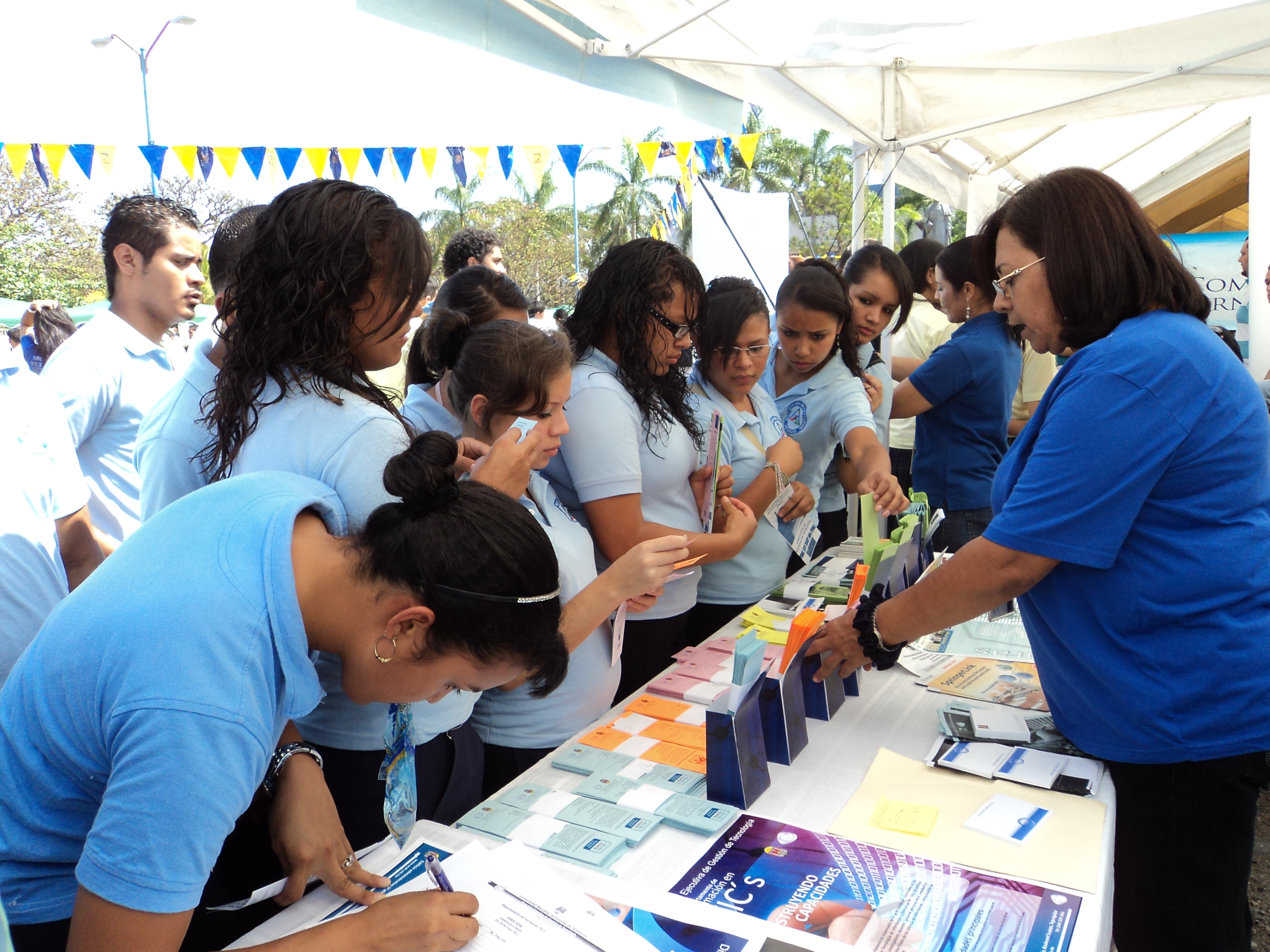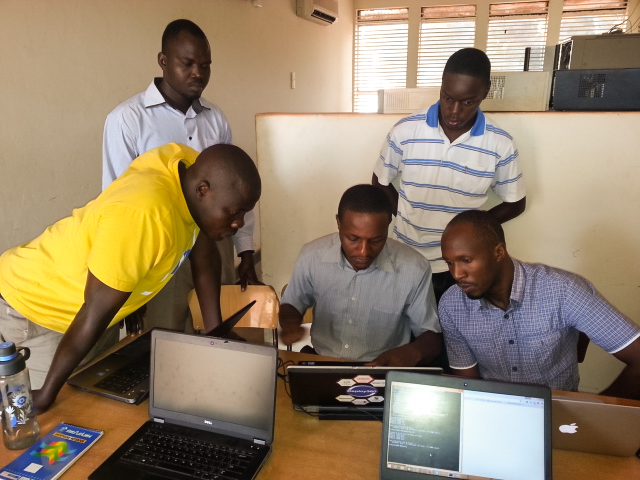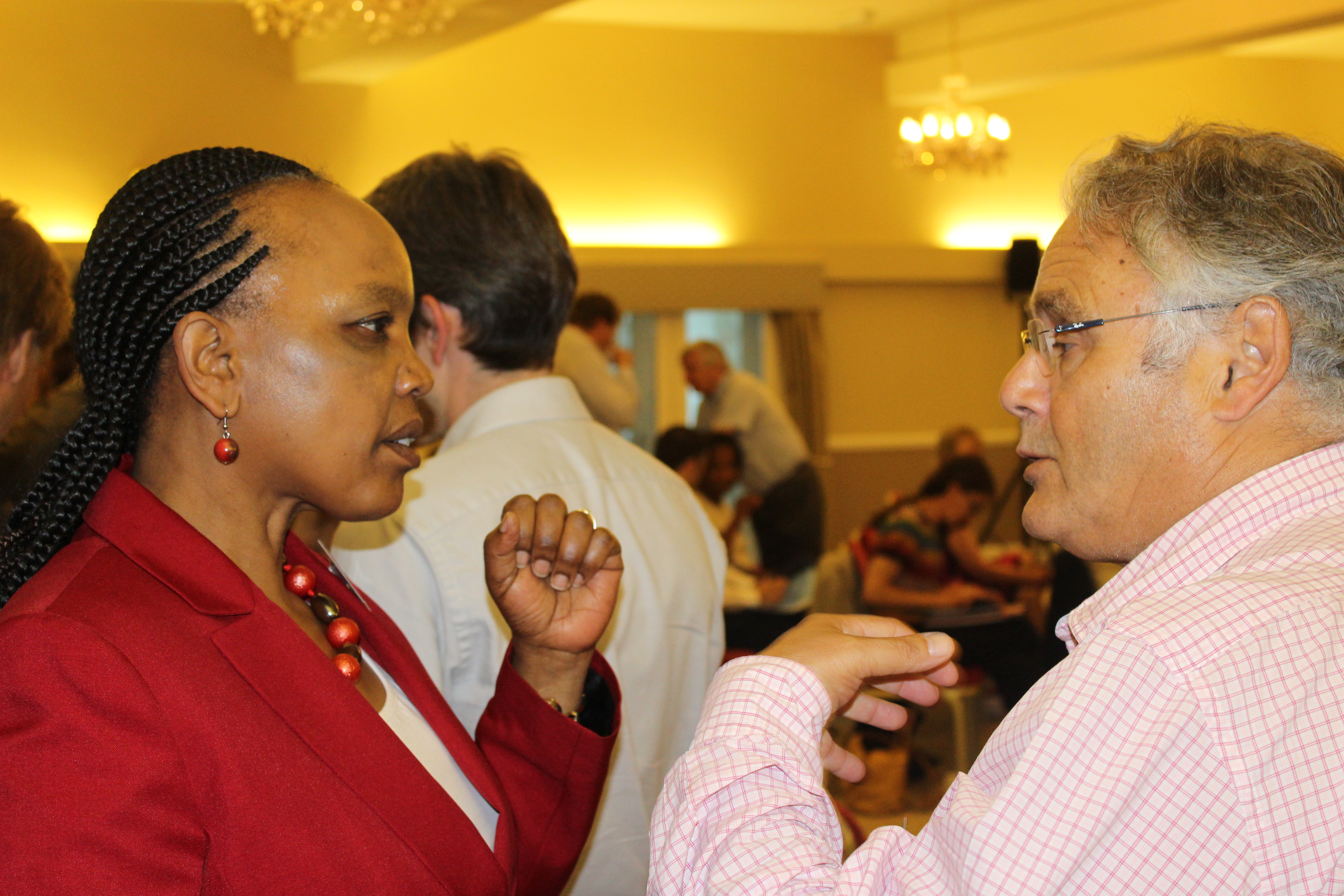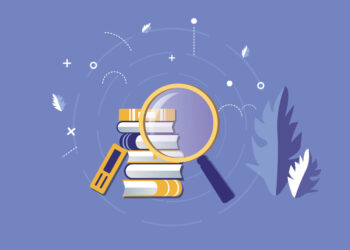
Editor’s Note: This post is by Anne Powell. Anne is the Programme Manager, Information Access and Publisher Liaison at INASP.
A recent post in The Scholarly Kitchen highlighted the crucial link between access and discovery, and the clear conclusion that making information available is not sufficient by itself. Discovery is a complex concept, a web made of tools, technologies, infrastructure and perhaps most importantly, relationships built on an understanding of the needs of users. At INASP we are working on each of these aspects with an ultimate goal of bringing them together on a global level.
To summarize recent events, it seems that health workers, Ministry of Health officials and researchers in Liberia had no knowledge of studies suggesting that Liberia could be considered an endemic zone for Ebola. Bernice Dahn, Chief Medical Officer of Liberia’s Ministry of Health writes in the New York Times that part of the problem is that the studies were conducted without partnership of Liberian health workers or scientists – all data was removed from the country for analysis. Findings were published in European journals inaccessible at the time of publishing, and now expensive to access. In fact, these studies should have been easily available to Liberian researchers and health workers through Research4Life, had they only known that they were there, or indeed, registered to access the program.
This revelation, along with recent reading of Roger Schonfeld’s Ithaka S+R Issue Brief on “Meeting Researchers Where they Start” and his development of that theme in the Scholarly Kitchen got me thinking about the researchers in the 1,900 developing country institutions that INASP serves. Libraries that we work with have access to up to 50,000 online journals and 20,000 e-books through our access and availability programme. They also have over 45,000 titles via Research4Life and other schemes.
Looking at this picture, it is clear that collectively we have made great strides towards increasing availability of scholarly materials for researchers in developing countries. In our own work at INASP, we continue to learn that we must go further than just making content available. Availability of content was a starting point, but, through initiatives like our own, Research4Life and an ever-increasing amount of open access content, there is a now substantial core of information available to developing country researchers (and here I’d widen the term to include health workers).

This discussion for INASP has moved on from the issue of availability onto one framed by access and discoverability. There seem to be breaking points all along the way, which, of course, are also points at which solutions can and need to be found. What are the breaking points? Very often they are where communication is not happening and where the provider (of information, materials, IT systems, platforms), whether publisher, librarian, network engineer, does not understand the user (student, researcher, health worker, librarian); their needs, knowledge limitations or experiences. At INASP we provide support across the research communication sector to increase access, production and use of information and knowledge.
Discovery
At what point does the necessary effort to obtain research literature become too much, and the system lets down the researcher (and the librarian, and the publisher). In his comment on one of Roger’s Scholarly Kitchen posts, my colleague Jon Harle discusses the situation we meet sadly too often, of a researcher attempting to open an article he should have access to, finding a barrier and giving up, assuming that the content is inaccessible. These barriers are something we think of as ‘final click’ problems where the user is so close to being able to open an article, but authentication issues or even lack of the current version of Adobe may prevent it.
There is a question about how useable discovery tools are, as researchers would need to be able to get to a computer, which connects to the discovery tool, leading to an authenticating system, leading to the article; presenting potential stumbling blocks at every point.
Technology & Infrastructure
As Roger identified, mobile access is widespread and popular worldwide, but, as he also points out, this is only effective when information resources are formatted to be readable on such devices. Mobile phones may be unable to connect to systems, discovery tools may not work, they may be very slow, and, in developing countries, while mobile phones are in wide use, smartphones won’t be in the hands of every user (particularly outside of relatively wealthier capital cities). Systems librarians and engineers will need to speak to users to identify what kinds of barriers they are facing, publishers will need to think about their users when formatting content. INASP has been supporting National Research and Education Networks (NRENs) to improve network management. By bringing them together with librarians and campus technicians, we are seeing progress in areas like stable IP addresses, bandwidth management, better management of the network and consideration of library requirements.
Understanding the End User

Conversations at the recent UKSG 2015 conference showed how much effort librarians are making to understand both the subject and format needs of their users and the methods users employ to find those materials. I was particularly attuned to this at UKSG as we have been supporting the developing country librarians we work with to develop these skills, and have seen increasingly good, professional relationships between librarians and researchers.
Many of the barriers which have been identified could be tackled by the development of links and relationships. All those in the chain are working towards making research literature available, having it used and then being able to share the resultant research. While conferences often try to bring the groups together, especially publishers and librarians, I believe that solutions will only start to emerge as these groups and individuals within them pick up discussions like the present one and put them into practice.
Researchers need to have relationships with their librarians, to be able to approach them for help and be made aware that the access is available. We are working on improving these relationships through training in marketing and promotion of e-resources, facilitated discussions (between librarians, researchers and ICT technicians) and providing small grants to institutions and library consortia to promote their e-resources which have resulted in institutions focusing on making library staff accessible and approachable for researchers.
Links and Relationships
Publishers are taking steps to understand developing country conditions through visiting the consortia we work with to offer training in their products. It is often only then that they become aware of the unique needs of institutions in these regions. From the librarians’ side, these visits enable them to learn more about the publisher’s content and the ways they can market this to ensure the right researchers get to know about it.
To bring them the right content, librarians need to build connections with researchers, getting out of the library and going to where the researchers are to really understand their needs.
This is a web of users and providers – on a global scale. It is by bringing all parties together that we will see progress in moving from the supply of materials to truly valuable use of them in addressing vital, contemporary issues like Ebola.
If you are interested in joining this conversation, post a reply below, follow us on Twitter at @INASPinfo @pubsfordev , use the hashtag #pfd2015 or join us for our annual conference – Publishers for Development.
Discussion
12 Thoughts on "Guest Post: INASP’s Anne Powell — Availability Does Not Equal Access"
Could it be that Liberia never knew because they never asked? In order for discovery to begin one has to ask a question. Or, could it be that Liberia never knew because they were dealing with other more immediate problems? Or, as my old SGT used to say: It is hard to remember your job was to drain the swamp when you are up to your behind in alligators!
As an aside, I notice in the photograph accompanying the article that all the folks at the table are young. Where are the researchers you are trying to reach?
The above observation leads me to ask: How does one get the research scholar to go back to the library? Most whom I know, simply turn on the PC and research away. Additionally, they tend to use the tools they know because they don’t have the time to learn new systems or the one they are using is satisfying their needs. The library can send out notices and that sort of thing. In short, libraries can advertise their new and old wares, but will that draw the researcher back to the library where the librarian can either guide one to a new research tool or teach one how to use one.
To answer your last question- I think google will play a critical role. Most of the researchers are used to using this as their main source of research/searching – just like the rest of the world – if there is a way at the institutional level to enable google scholar linking (with link resolvers, etc.) to content available through the libraries- it’s a good way to get the researchers out of the general google search environment, into the scholarly articles made available to their institutions through INASP and R4L.
Anne, Was there a typo in the above important post, regarding the number of developing countries that INASP serves? I don’t think you meant to type “1,900 developing countries.” The INASP website indicates, “We work with 21 partner countries and over 80 network countries around the world…” Could you help us by describing theinstitutional outreach? Many thanks!
Is there not also the problem that research rarely reaches those in policy who can instigate action and change, especially in developing countries?
Researchers are just one part of the puzzle. There need to be better methods for relating research to a policy audience who can advise governments on action.
I feel that context is often the missing element in this divide, rather than simply the access and availability. How to address this? I’m not sure. There are initiatives in places like EvidenceAid, SciDev etc, but it’s not clear how successful they are in reaching a wide audience.
Joe, absolutely – the challenge of getting research to policy makers, or rather to encourage policy makers to turn to research as they grapple with policy issues, is a big one. At INASP we’re working with partners in Zimbabwe, Ghana and South Africa to help decision makers in government and parliament understand how to handle evidence: http://www.inasp.info/en/work/vakayiko/. You can read more about how we’re doing this and what we’re learning on our blog http://blog.inasp.info/tag/vakayiko/
Hi Joe, I couldn’t agree more, researchers are only one part of the massive puzzle. I think we tend to categorise and put stakeholders in silos instead of bringing them together and exploring solutions together. Researchers can struggle with access and availability and even if they solved that issue, they need to communicate their work effectively and even if that was also improved, there’s an audience who needs to use it in a timely manner to answe complex questions under a lot of pressure. How to ensure that this system works well? Or works at all? Trying to systematise this is important and, at least in the Evidence Informed Policy Making (EIPM) team in INASP we tackle it at three levels: working with individuals to strengthen the attitudes, skills and knowledge to access and use research; work on organisational processes that allow individuals to handle research (and evidence in general) and steer systems that are strong that allow researchers, policy-makers (and other sectors of society) to share knowledge, ideas, generate dialogue and engagement. Taking a holistic approach, that considers all the relevant actors together is fundamental, we are trying to stop working in silos as if actors didn’t interconnect. Interconnections and collaborations bring about change.
Context is indeed a fundamental issue, and we keep on talking about context but we are not sure what to specifically point at. What is context? Together with politics and ideas http://www.politicsandideas.org/ we are going through an effort to systematise the knowledge, and incorporate new, about context. We will try to flesh out what it means and understand what knowledge is more useful in different circumstances, particularly in policy-making. The idea is to develop a taxonomy that can hopefully shed some light into this broad and complex topic. Let us know if you want us to keep you in the loop on how things evolve on these issues!
It’s probably not necessary to point this out, but I’ll do it anyway: it’s absolutely true that availability is not sufficient for access. However, it’s also true that availability is essential for access.
It’s true that availability isn’t sufficient enough for access, but also that access isn’t sufficient enough for generating usage. Through a USAID funded program at the University of Tennessee we worked extensively in East Africa to deal with the issue of discoverability- implementing a platform that integrated content available to the libraries from INASP, as well as Research4Life. A key innovation here was that the discovery system de-duplicated content across all the databases available to developing country institutions (there is some overlap across programs), and allowed researchers to search and browse across ALL the content available to them, all through one simple, easy to use interface. We overcame constraints around the username and password access to the Research4Life databases by embedding authentication information into linking with each institution- so that when a researcher found an article available to them from R4L, the system would authenticate to the R4L servers at the backend, and download the article directly to the user’s desktop (avoiding having to go to the R$L site, and protecting the security of the R4L password at each institution).
I think I can say that unfortunately with a few exceptions (namely Uganda thanks to the librarians at Makerere, and a number of institutions in Tanzania), the program failed to deliver intended outcomes. This was for a myriad of reasons, but to name a few:
1. Many of the librarians felt disengaged in the process of system set-up, and felt as though they had little control over what was going on. Librarian buy-in was critical, however in most of the institutions in which we worked, the technical details seemed too complex for the librarians (e,g. link resolvers, etc), or they did not recognize the value of the service that was being provided to them
2. We had tried to engage librarians with the product through demonstrating value for the users, and not for the librarians. Our admin tool at the backend of the system was (is) a comprehensive ERM system, that delivered a number of services to librarians (relating to licensing, tracking usage, generating reports, etc). In hindsight it would have been more strategically sound to gain their interest through what services were being delivered to make their lives easier.
3. There were also a number of misconceptions that were spread about the discovery system (Libhub from Sempertool) that we were implementing- particularly in Kenya – that it only searched open access content, that it was ‘more expensive’ than commercial alternatives from EBSCO, etc. I won’t go into the details around this, but they were frankly all patently false.
4. As Ann pointed out, infrastructure constraints play a part as well. We set up access on university networks, but it’s true that most young, active researchers in East Africa rely less on institutional networks than they do on personal USB models that they stick into their laptops. Where proxy systems do not exist to connect their computers to the university networks, researchers fail to reach the content made available on the library networks. This conversely was why some researchers found HINARI so useful- once they had the password, they could access the content from anywhere (in their country, that is).
Overall, the places in which the program has had demonstrated success has been places where librarian buy-in was secured, and there was sufficient engagement between librarians and researchers. Sokoine University in Tanzania and Makerere in Uganda are excellent examples of engaged librarians working to promote the fantastic collections that have been made available to them through the work of INASP and Research4Life.
More certainly needs to be done to improve/evolve librarian training around digital tools, and for researchers to have higher levels of information literacy (and of course greater research resources and incentives). It has been so disheartening to hear of stories of hard-working individuals who struggle to get their work published due to lack of knowledge of current advances in their fields. INASP is doing a fantastic job- but I believe that as a community of practitioners working to advance access to information in the developing world we need to do better to work together to leverage strengths and expertise to solve some of these persistent problems around access.
Thanks, Kamran, I’d agree that while the technology is there, there are still many challenges in implementation and use, so we collectively need to look at how to put it at people’s service, in order that librarians adopt it and researchers can reach what they need as simply as possible. Your experience supports my conviction that several conditions need to come together: commitment to support research information needs, the technology, the right timing, the necessary effort to ensure librarian buy-in and the involvement of campus networkers as well as librarians.
One step we’ve taken in the AuthorAID project at INASP, where among other things we conduct online courses in research communication for developing country researchers, is helping researchers find possible courses of action when they encounter a paywall or access barrier. This is a small part of our larger effort to strengthen links between our different programmes. I think all too often, librarians, researchers, journal editors, publishers, and others with a stake in scholarly communication are talking in different places about what are essentially common challenges and concerns.



